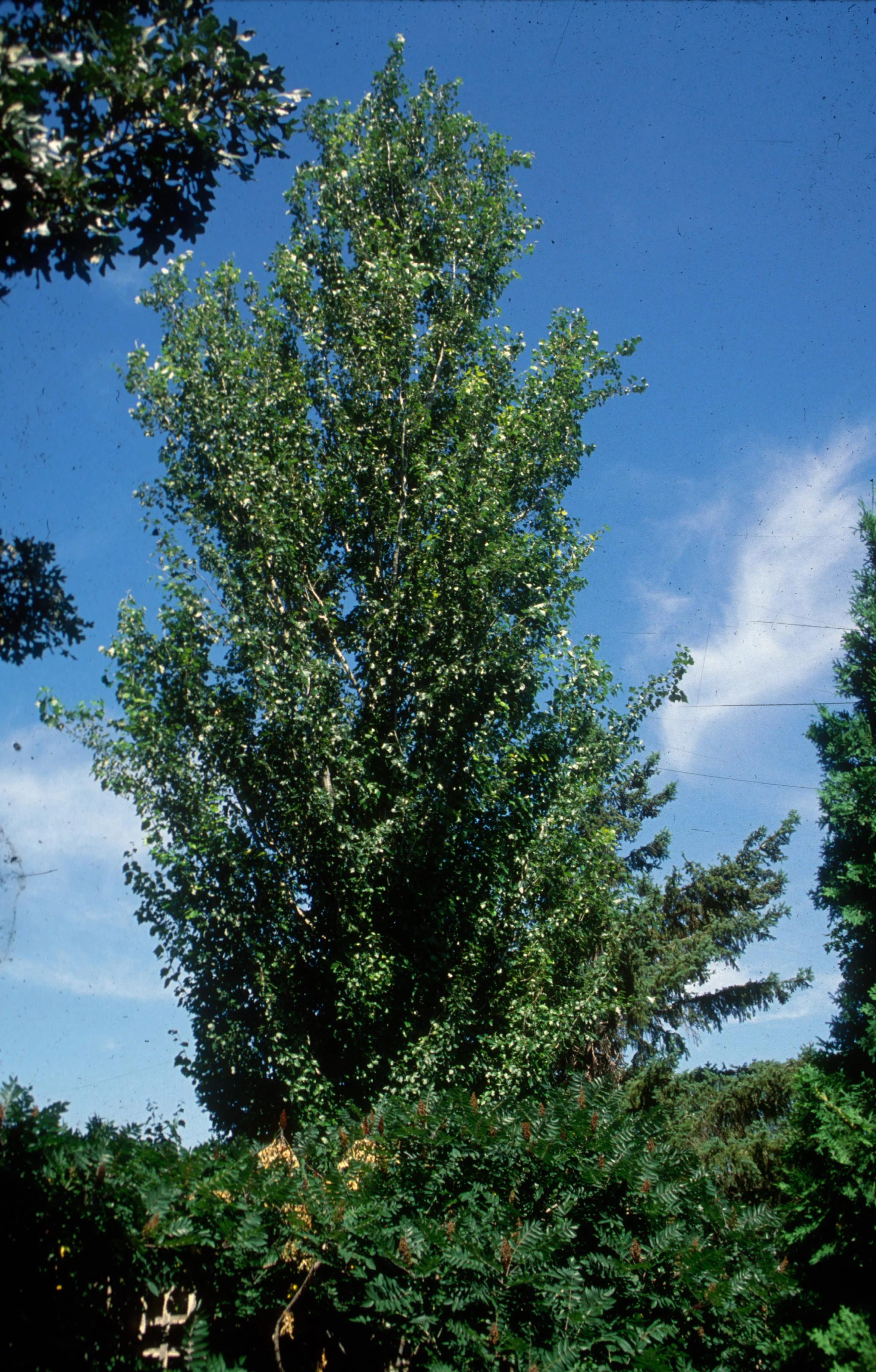Populus / Poplar & Aspen
populus / poplar & aspen
The Poplar is a common tree in our region. Often chosen as a windbreak tree due to it's rapid growth rate. It can be found natively growing in river-bottoms and other areas where ample moisture is available. The common poplar can reach a height of up to 100 ft and with trunk diameters as wide as 8 ft this is likely one of the largest trees you'll find growing in North Dakota. Tolerant of drought once established it prefers areas with ample moisture.
siouxland poplar
Populus deltoides 'Siouxland'
Siouxland is a strain of the common cottonwood. This cotton-less cottonwood was introduced by South Dakota State University. Its foliage is slightly larger than the common cottonwood. A fast growing tree with a rounded head at maturity, it is easily transplanted in most situations.
Height: 70 - 100 ft
Spread: 30 - 40 ft
Fall Color: Gold
USDA Zone: 3 - 9
“Often chosen as a windbreak tree due to it’s rapid growth rate.”
tower poplar
Populus x canescens 'Tower'
This is a hardy, disease resistant poplar for cold climate zones. A rapid growing cotton-less columnar tree, it is excellent for screening, sound barriers, or as an accent plant. 'Tower' is a introduction from Morden Research Station, Manitoba, Canada.
Height: 40 - 50 ft
Spread: 6 - 10 ft
Fall Color: Yellow
USDA Zone: 3 - 9
**Info taken from Bailey Nurseries, Inc.**
QUAKING ASPEN
Aspen trees grow fairly straight and become clear of lower limbs over time. Sometimes called trembling aspen because their leaves tremble in a light breeze due to their flattened petioles. Most extensive native range of any tree in North America. Rapidly recolonizes disturbed sites (after fire, logging, etc.). The largest tree in North Dakota is 70 feet tall with a canopy spread of 39 feet.
Height: 60 - 80 ft
Spread: 30 - 35 ft
Fall Color: Yellow
USDA Zone: 2 - 7
care and pruning:
POSITIVES:
One of the greatest positives about the Poplar is probably its rapid growth rate. In a region where few trees exist naturally these trees are often chosen because of their ability to get up and offer shade and protection quickly. They are very adaptable to conditions and have relatively few insects and diseases that bother them.
DRAWBACKS:
Perhaps the largest drawbacks of the poplar are their soft wood. Due to their rapid growth rate they are also a soft wooded tree. This means that they are susceptible to branch breakage in windy sites. This sometimes does not make them the best choice for a yard tree. Unless you don't mind going around before you mow and picking up branches and dead twigs that fall from the tree during wind storms.
Additionally these trees have a root system that rises with age, creating bumpy ridges in the lawn that can make maintaining a lawn difficult. This is not nearly as common with the Aspen and Tower Poplar as it is with the Common Poplar.
PRUNING:
The optimal pruning time for Poplar trees is late summer and early fall once the leaves begin to change color.
For more on identifying old wood and new wood see our page on care of woody plants.







